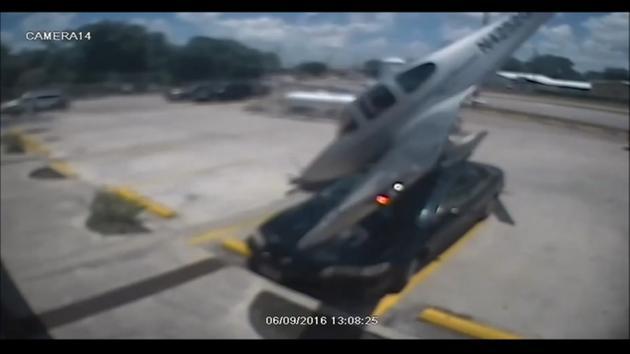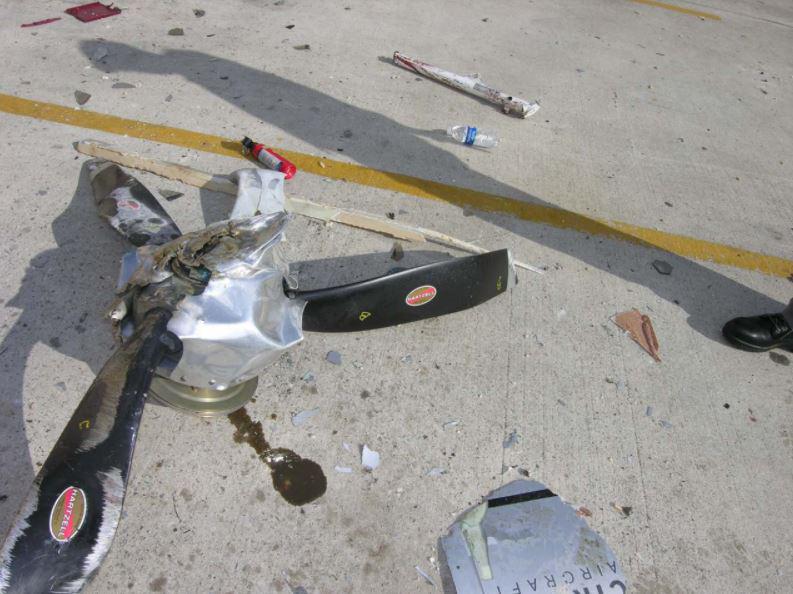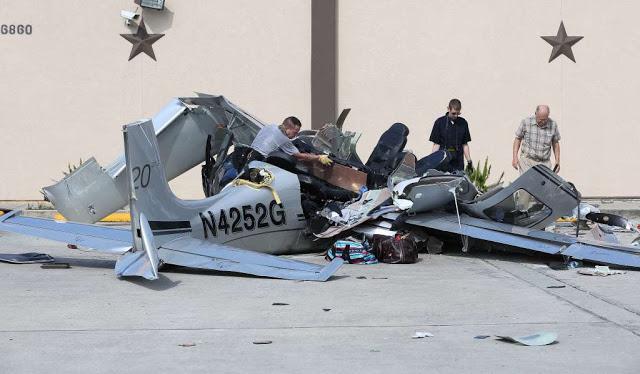Accident Chain:
- Unfamiliar Airport
- Long Flight (3hrs stuck in a small airplane)
- Get-there-itis (visiting sick father-in-law, and delivering her two passengers to the destination)
- Disregarded requirement for a Flight Review
- No spin recovery training
- Flustered by ATC
- Accepting clearances from ATC that put the airplane into undesired states
- Failed to be assertive with ATC to only accept clearances that were within her comfort level
- Failed to develop a plan of her own for landing at the airport, instead allowed ATC to put her aircraft into undesired states
- Failed to properly configure the aircraft for landing, resulting in a high and fast approach, necessitating a Go Around
- ATC Clearance during critical phase of flight
- ATC Keeping the aircraft in the traffic pattern (The pilot or ATC should have put the A/C back to approach for re-sequencing to accomplish a stable approach)
- High gross weight / aft CG
- Failed to deploy parachute until just prior to impact (A/C was probably too low in the pattern for it to be effective anyway)
- Failed to maintain proper airspeed on Go Around
- Failed to recognize aircraft approaching a stall and inevitable spin with high power setting
- Retracted flaps below flap retraction speed (contributing to the stall)
- FAILED TO PRIORITIZE ANC (Aviate, Navigate, Communicate)
The questions we all have?
- How does this happen?
- Why did this happen?
- How do I make sure this doesn’t happen to me?
These are great questions, and difficult to wrap your mind around and answer as well. The hardest part of this accident is the fact that the pilot, was actually a very good pilot. She was by no means a “new pilot”, having held her certificate for a couple years and logged over 300 hours of flight time (most of which was in Cirrus aircraft). She was certainly capable and competent to complete such a flight as she set out to do. What is so tough and insidious about this accident is a string of seemingly minor “threats” or issues occurred, and somehow manifested into a terrible accident. The risks accepted by our accident pilot were well in line with risks accepted by many GA pilots. Most pilots with 300+ hours of flight time have allowed themselves to be placed into at least one of “traps” or issues our accident pilot did.
The problem with understanding this accident is that while pilots are told by ATC to “go around” and “make it tight” on a fairly regular basis, that usually does not lead to pilots dying, however this time it did. The “threats” or issues mounted and mounted to some undefined point and it only took one more little straw to break the camel’s back (or in this case cause the accident). We all accept risk when we fly, and much of the risk Dana accepted with ATC’s instructions and embarking on this flight under the given conditions is the exact same risk’s we’d be willing to accept any day as pilots. Unfortunately here, that level of risk hit the “invisible tipping point”, and in just a few seconds after flipping a flap switch to the “up” position, three lives abruptly ended.
NTSB Probable Cause
While some pilots may not always agree with the findings of the NTSB after an accident. I really do not think that the NTSB could have been any more on-point with their findings this time. The probable cause below sums almost perfectly why this tragedy occurred. The National Transportation Safety Board determines the probable cause(s) of this accident to be:
The pilot’s improper go-around procedure that did not ensure that the airplane was at a safe airspeed before raising the flaps, which resulted in exceedance of the critical angle of attack and resulted in an accelerated aerodynamic stall and spin into terrain. Contributing to the accident were the initial local controller’s decision to keep the pilot in the traffic pattern, the second local controller’s issuance of an unnecessarily complex clearance during a critical phase of flight. Also contributing was the pilot’s lack of assertiveness.
The TAKEAWAY…….
What we can take away from this accident is this:
- Use a risk assessment matrix
- Some risk must be accepted anytime you fly an airplane, but there is an invisible “do not cross” line in terms of accepting Risk, and it may even vary from time to time where that invisible line lies. You must always MITIGATE risk every chance you get.
Factors that could have prevented this accident:
If anything of these things occurred below, we wouldn’t be having this conversation, the accident would not have occurred. A chain of minor “threats” and “errors” formed, and if at any time we could have done any of the things on the list below, we could break the chain, and stop the accident from occurring (at least you would stop THIS accident from occurring, breaking just one link in an accident chain may still leave enough links to form a different accident down the line).
- Maintain Proper Airspeed On a Go Around
- Take a Few Hours of Spin Training
- Do Not Retract Flaps at Slow Airspeeds
- Never accept an “unstable approach” even if ATC tries to talk you into it
- Don’t put pressure on yourself to land at “THAT AIRPORT” be flexible in your travel plans, and if you can’t be flexible, drive instead of fly.
- Be Assertive with ATC and tell them what YOU NEED to fly your plane (what you need is to stick to what you know works, and not accommodate random ATC requests)
- Prioritize! Aviate-Navigate-Communicate! ALWAYS in that order!!!
Recognizing the Signs (know when to call it quits)
All these people constantly say “use good ADM’ and “ADM is really important”. Well thanks, now I know something that doesn’t really make sense to me is really important, but how the heck is that useful tidbit going to keep me alive? ADM is any decision you make in the air, and the ability to recognize “threats” that pose a hazard to the safety of flight, or increase the risk of that flight (usually both). So let’s make this less abstract and talk about actual examples from this accident. We’ll give examples of “threats” that you should be alert to as a pilot and realize when these things start happening, you need to stop, re-focus, and get the airplane back to a happy place you are comfortable with that doesn’t have all of these “threats” popping up. The quiz will give you ten example threats that occurred during this flight, and your job will be to select any and all things that could be done to counter it.
Look at each scenario and select the response you think would properly deal with and mitigate the threat. The goal here is not to get a 100%, but to review the “correct” answers afterwards to start developing real world examples in your brain of how to deal with “threats” in the air.Hobby Airport Threats
How many threats are too many?
Well no perfect answer there. In this accident, about 20 things went wrong before anyone died. In some accidents, it only takes one thing. The vast majority of the time, it will take 3 or more “threats” (note: sometimes the “treats” are extremely trivial) to get you killed. Personally, I use the “three strikes and you’re out rule”, meaning once I have two things go wrong in an airplane, I “abort” and go back to my safe happy place (a.k.a. “Plan B” and get the heck away from the “threats”). You’ll have to develop your own personal minimums, and they may change over time.
One of my first flights as a certificated private pilot was in a 152 that had a slight radio problem right after takeoff at a non-towered airport. I landed immediately and had the mechanic take a look at it. Today I would probably just keep flying if nothing else was wrong and not worry too much about that particular “threat”, your comfort zone will change over time and experience. Just remember there’s a fine line between “comfort zone growth” and complacency that will get you killed.
Take the quiz
Take the quiz below and see how likely you are to fall into the same traps as our pilot in this accident case study. (note: the higher you score on the quiz, the more likely you are to make the same errors that lead to this accident).
Responses
You must be logged in to post a comment.




Responses